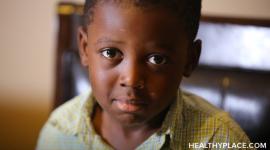Bully Victim No More

Is your child a victim of bullying? Here are concrete steps parents can take to help your child deal with the bullying behavior.
"Sticks and stones may break my bones, but names will never hurt me." Remember that old rhyme? It wasn't true when you were in school, and it isn't true now. Teasing, taunting and other forms of bullying can cause serious emotional harm to children that lasts much longer than the bloody nose or scraped knees. Ignoring or excusing the behavior, saying things like "kids will be kids," only perpetuates the situation.
Bullying takes place in every school: According to the Heroes and Dreams Foundation, a nonprofit resource center for parents in Minneapolis, on average, one student in 10 is bullied at least once a week, and one in three has experienced bullying as either a bully or a target during the average school term. The children most likely to experience bullying are in fifth, sixth and seventh grades. Boys are more likely to be involved than girls.
There are three types of bullying:
- Physical (hitting, kicking, taking things or returning things damaged);
- Verbal (name-calling, taunting, insulting); or
- Emotional (shunning, spreading nasty gossip).
It is deliberate and hurtful behavior, usually repeated over a period of time. Bullying is almost always done to kids who are perceived to be more vulnerable than the bullies.
The fear of being harassed in school gets in the way of learning, and makes going to school a miserable experience. Being bullied can make children feel lonely, unhappy and unsafe. Children who are being bullied may develop stomach aches, nightmares, nervousness and anxiety.
What Parents Can Do
If your child complains about being bullied at school, or if you suspect that might be happening, here are some suggestions.
-
Make it clear that you accept your child's reports of what is happening and that you take them seriously. She needs to know she has someone on her side who is willing to help her. Today, you are her hero. Reassure her that this situation can be resolved.
-
At the same time, let her know that you do not think this is her fault. Her confidence has already taken a big hit, and she already feels like a victim.
- While it is natural to want to protect your child by solving the problem for him, it will serve your child better if you teach him how to solve the problem himself. By learning the skills to stand up for himself, he can use them in other situations.
-
Ask your child how she has been dealing with the bullying, talk about what else can be done and discuss what actions you can both take to solve the problem. Reassure her you will consult her before taking any action.
-
Teach your child how to respond to a bully in a bold, assertive way. Practice with him at home by role playing. Participation in other activities builds confidence and develops social skills, making it easier to find ways of saying, "Leave me alone."
-
Suggest that your child stick with two or more other children when at the playground, the bus stop or wherever she comes face-to-face with the bully.
-
Make sure your child knows it is okay to ask for help from a teacher or other adult. Practice what he'll say so he doesn't sound like he's whining or tattling.
-
Determine if your child has healthy friendships with other children. If not, perhaps she can benefit by developing better social skills. Encourage her to invite friends over to your home and participate in school activities.
-
If necessary, meet with school representatives to discuss the problem.
Remember, bullying is not a normal part of growing up. Help your child develop the necessary tools to stick up for himself and others.
Sources:
- The Heroes and Dreams Foundation
APA Reference
Staff, H.
(2022, January 11). Bully Victim No More, HealthyPlace. Retrieved
on 2026, January 13 from https://www.healthyplace.com/parenting/anxiety/bully-victim-no-more



